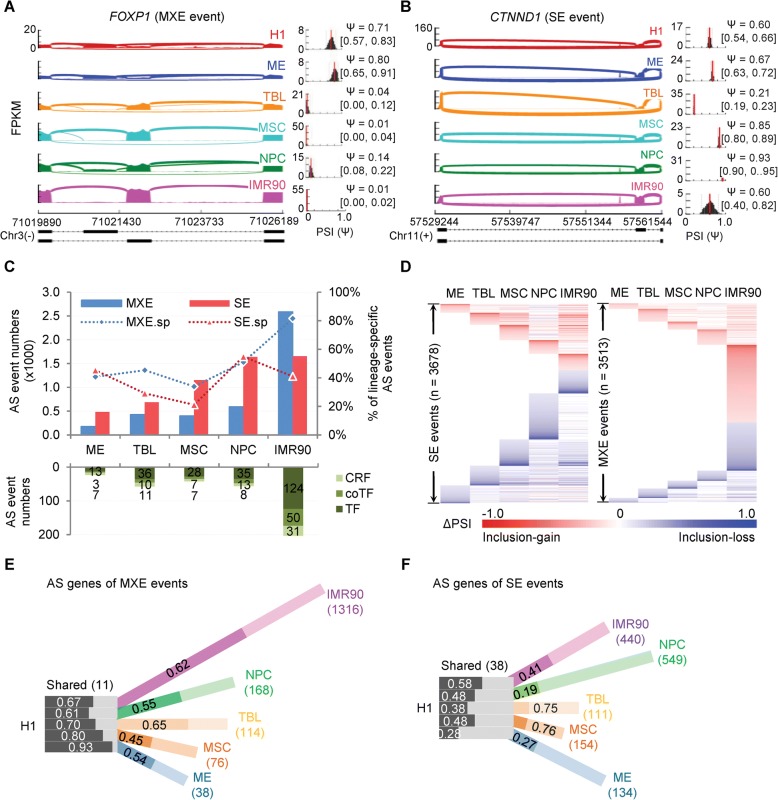Fig. 1.
AS characterizes the hESC differentiation. a, b Sashimi plots show two AS events of previously known ESC-specific AS events, FOXP1 (a) and CTNND1 (b). Inset histograms show the PSIs (Ψ) of the AS exons in all cell types based on the MISO estimation. c The bar graph shows that the number of total AS events and lineage-specific AS events increase coordinately with the developmental levels. Higher developmental level induces more (lineage-specific) AS events. MXE.sp. and SE.sp. indicate the percentage of lineage-specific AS events. d Heat maps show the differential “percent splice in” (ΔPSIs) of SE (left) and MXE (right) AS events (rows) for each cell lineage (columns). For MXE event, the ΔPSIs are of the upstream exons. e, f The hosting genes of MXE (e) and SE (f) AS events characterize cell lineages. Black and white bars refer to the common AS genes shared by all cell lineages, while the colour bars indicate the lineage-specific AS genes. The length of the colour bars is proportional to the percentage of lineage-specific genes. Dark fills indicate the inclusion-gain events, while light fills indicate the inclusion-loss events. The numbers in the bars are the proportion of corresponding parts; the numbers in the parentheses are the numbers of common AS genes or lineage-specific AS genes of each lineage. Gain or loss for MXE events refers to the upstream exons. Also see Additional file 1: Figures S1–S3

